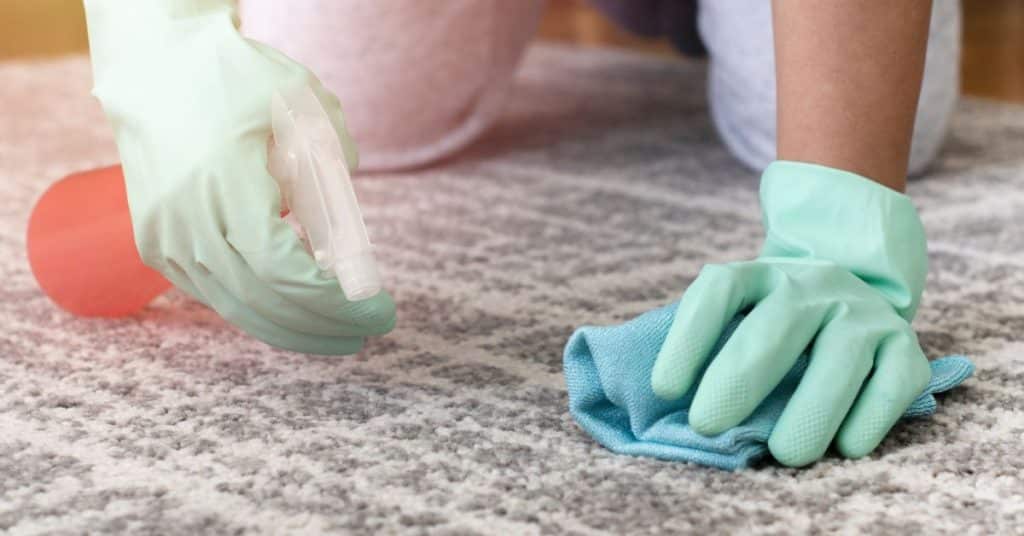Blog Posts
The Ultimate Guide to Stain Removal: Tips for Every Fabric and Surface
Stains are an inevitable part of life, whether they come from a spilled glass of wine, a muddy paw print, or an accidental ink blot. Knowing how to effectively remove stains from various fabrics and surfaces can save you time, money, and frustration. In this comprehensive guide, we’ll share practical tips for tackling stains on everything from clothing to carpets, emphasizing the importance of deep cleaning and the advantages of hiring cleaning professionals. Let’s dive in and learn how to keep your home spotless and stain-free.

The Importance of Deep Cleaning
Before we delve into specific stain removal techniques, it’s essential to understand the significance of deep cleaning. Regularly scheduled deep cleaning helps maintain a clean and healthy living environment, making it easier to manage and prevent stains. Here are some key benefits of deep cleaning:
1. Thorough Cleanliness
Deep cleaning ensures that your home is thoroughly cleaned, reaching areas that regular cleaning might miss. This makes it easier to tackle stains without feeling overwhelmed by accumulated dirt and grime.
2. Improved Indoor Air Quality
Deep cleaning helps reduce the buildup of dust, allergens, and pollutants, improving indoor air quality. This is especially important for households with allergy sufferers or pets.
3. Prevention of Stain Buildup
Consistent deep cleaning helps prevent the buildup of stains from various sources, such as spills, dirt, and pet accidents. By addressing these issues regularly, you can maintain a cleaner home environment.
4. Enhanced Comfort and Aesthetic Appeal
A deeply cleaned home is more inviting and comfortable. Deep cleaning helps keep your living spaces looking and smelling their best, making them pleasant for you and your guests.
Tips for Removing Stains from Different Fabrics and Surfaces
Now that we understand the importance of deep cleaning, let’s explore some practical tips for removing stains from various fabrics and surfaces:
1. Clothing and Fabrics
Stains on clothing and fabrics are common, but they don’t have to be permanent. Here’s how to tackle some of the most common stains:
- Wine Stains: Blot the stain with a clean cloth to remove excess liquid. Apply a mixture of equal parts hydrogen peroxide and dish soap to the stain, then rinse with cold water. Repeat if necessary.
- Grease Stains: Sprinkle baking soda or cornstarch on the stain to absorb the grease. Let it sit for 15 minutes, then brush off the powder. Apply dish soap to the stain and rinse with hot water.
- Ink Stains: Dab the stain with rubbing alcohol using a cotton ball or cloth. Rinse with cold water and repeat if necessary. For stubborn stains, apply a mixture of vinegar and cornstarch, let it dry, then brush off the residue.
- Blood Stains: Rinse the stain with cold water to remove as much blood as possible. Apply hydrogen peroxide to the stain and let it sit for a few minutes, then rinse with cold water. Repeat if necessary.
2. Carpets and Rugs
Carpets and rugs are prone to stains from spills, dirt, and pet accidents. Here’s how to keep them looking their best:
- Coffee Stains: Blot the stain with a clean cloth to remove excess liquid. Apply a mixture of white vinegar, dish soap, and water to the stain, then blot with a clean cloth. Rinse with cold water and repeat if necessary.
- Pet Stains: Blot the stain with a clean cloth to remove excess liquid. Apply an enzymatic cleaner specifically designed for pet stains, following the manufacturer’s instructions. Rinse with cold water and blot dry.
- Mud Stains: Allow the mud to dry completely, then vacuum up as much as possible. Apply a mixture of dish soap and water to the stain, then blot with a clean cloth. Rinse with cold water and repeat if necessary.
- Red Wine Stains: Blot the stain with a clean cloth to remove excess liquid. Apply a mixture of white vinegar, dish soap, and water to the stain, then blot with a clean cloth. Rinse with cold water and repeat if necessary.
3. Upholstery
Upholstered furniture can be challenging to clean, but these tips can help you tackle common stains:
- Food Stains: Blot the stain with a clean cloth to remove excess food. Apply a mixture of dish soap and water to the stain, then blot with a clean cloth. Rinse with cold water and repeat if necessary.
- Drink Stains: Blot the stain with a clean cloth to remove excess liquid. Apply a mixture of white vinegar, dish soap, and water to the stain, then blot with a clean cloth. Rinse with cold water and repeat if necessary.
- Ink Stains: Dab the stain with rubbing alcohol using a cotton ball or cloth. Rinse with cold water and repeat if necessary. For stubborn stains, apply a mixture of vinegar and cornstarch, let it dry, then brush off the residue.
- Grease Stains: Sprinkle baking soda or cornstarch on the stain to absorb the grease. Let it sit for 15 minutes, then brush off the powder. Apply dish soap to the stain and rinse with hot water.
4. Hard Surfaces
Stains on hard surfaces, such as countertops, floors, and walls, can be tricky to remove. Here’s how to tackle some common stains:
- Water Stains on Wood: Apply a mixture of equal parts white vinegar and olive oil to the stain, then rub with a soft cloth. Wipe off any excess with a clean cloth.
- Rust Stains on Tile: Apply a paste of baking soda and water to the stain, then scrub with a brush. Rinse with water and repeat if necessary.
- Grease Stains on Countertops: Apply a mixture of dish soap and water to the stain, then scrub with a sponge. Rinse with water and repeat if necessary.
- Crayon Stains on Walls: Apply a mixture of baking soda and water to the stain, then scrub with a sponge. Rinse with water and repeat if necessary.
5. Consider Hiring Cleaning Professionals
If you find it challenging to remove stubborn stains or prefer to delegate the work, consider hiring cleaning professionals. Here are some benefits of enlisting their help:
- Expertise and Experience: Cleaning professionals have the knowledge and experience to handle various stains efficiently. They are trained to use the right techniques and products for different surfaces, ensuring a thorough and safe clean.
- Specialized Services: Professional cleaners offer specialized services, such as deep cleaning, carpet cleaning, and stain removal. These services can address specific cleaning needs and challenges that regular cleaning might not cover.
- Time Savings: Hiring cleaning professionals can save you time and effort, allowing you to focus on other important aspects of your life. Whether you have a busy schedule or simply prefer to spend your time on other activities, professional cleaners can take care of the deep cleaning for you.
- Consistent Results: With a recurring cleaning service, you can enjoy consistent and reliable results. Professional cleaners follow a systematic approach to ensure that your home remains clean and well-maintained.
- Customized Cleaning Plans: Many cleaning professionals offer customized cleaning plans tailored to your specific needs and preferences. You can choose the frequency and scope of the cleaning services, ensuring that your home receives the attention it requires.
Conclusion
Removing stains from various fabrics and surfaces doesn’t have to be a daunting task. By understanding the importance of deep cleaning and using the right techniques and products, you can effectively tackle stains and keep your home looking its best. Remember the benefits of hiring cleaning professionals to help manage the more challenging tasks and ensure consistent results. With a little effort and the right strategies, you can enjoy a spotless and stain-free home.
About The Author
Freshen Your Nest Cleaning is your trusted cleaning service based in Blackwood, NJ. Our team provides professional cleaning services tailored to meet your residential needs, including recurring maid services, deep house cleaning, and move-in/out cleaning services. If you’re in the Blackwood area, don’t hesitate to reach out for a complimentary quote and experience the refreshing touch of Freshen Your Nest Cleaning in your home.
Quote Form
"*" indicates required fields
← Next Blog Post: How to Keep Your Kitchen Sparkling Between Meals
